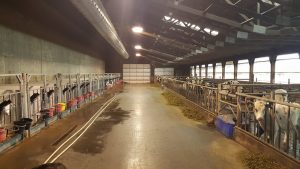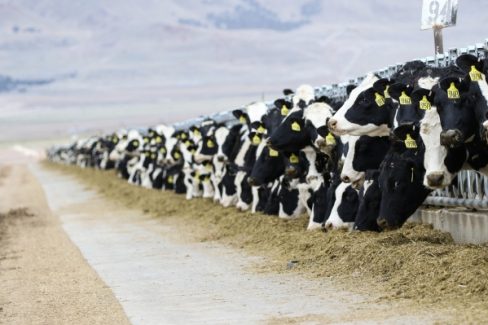Dairy farmers put a lot of thought, effort, and expense into the breeding program for their farm. There are family bloodlines that have been worked on for generations. Each time a pregnancy is created, the goal is to end up with a cow in 3 years time, that is genetically superior in milk to her dam.
The day that calf is born, she has her full genetic potential, and given a sound breeding program she is, in fact, genetically superior to her mom. Researchers have recently discovered that an increased growth rate before weaning has a positive effect on lactation milk yield. Every 1 kg of pre-weaning average daily gain (ADG) results in another 1,113 kg of milk produced in her first lactation with 22% of the variation in first lactation milk yield explained by pre-weaning ADG (Soberon et al, 2012). Alternatively, research by Quigley 2017 shows that for every day that your calf is sick before weaning equals 126 kg less milk she will produce in her first lactation. The goal of any calf program should be to double the calf’s weight in the first 2 months of its life.

That makes the calf manager one of the most important jobs on a dairy farm. The person that cares for calves should be detail-oriented and take the time to know each calf whether they are caring for 5 or 50 calves on milk at any given time. Raising quality calves can be broken down into 3 parts: Starting the calf off right with good quality Colostrum, maximizing the calf growth with good quality nutrition, and providing an environment in which the calf can thrive.
1) Start Strong
Getting your calves off to a good start requires careful attention to the quality of colostrum fed and how quickly the calf receives that colostrum. Inattention to colostrum feeding can cost >1000 kg to milk loss for that calf in the first and second lactation (Quigley 2107). As a guideline, calves should receive a minimum of 100g of IgG in the first feeding. The concentration of IgG in colostrum can vary according to many factors, including a cow’s disease history, volume of colostrum produced, season of the year, and even her breed. High quality colostrum for newborn calves should contain 50 mg/mL or more of IgG. A Brix refractometer is one tool that can help to measure IgG in colostrum. A Brix value of 22% corresponds to 50 mg/mL, meaning colostrum with a Brix value above this cut off point can be considered high quality colostrum.
Accelerated feeding programs and ProAction® promote feeding calves more milk in the first 4 to 6 weeks, up to 8-10L per day. Farms that want to adopt this feeding strategy need to keep in mind how the calf receives the milk, especially if still only feeding the calves twice a day. These programs work best when a calf is fed from a nipple bottle. The suckling behavior and position of the head allows the esophageal groove to close properly so that the milk bypasses the rumen and goes directly into the abomasum. Fed this way, the calf’s stomach is capable of holding over 5L of milk at one time (Elingsen, 2014). Allowing calves to feed from a nipple bottle also promotes increased saliva production aiding in the digestion of the milk proteins and satisfies the calves need to suckle, reducing cross suckling. When calves drink large volumes of milk from a bucket, the esophageal groove does not function in the same way. Calves tend to gulp the milk allowing for milk to spill over into the undeveloped rumen. This type of feeding leads to chronic bloating calves and ruminal drinkers.
2) Daily Nutrition
Research tells us that calves are unable to fully digest the grain that they eat in the first 3-4 weeks of life, therefore, if we are not feeding our calves 8-10L of milk a day we are actually limit feeding them. Providing free-choice, fresh water to young calves is also extremely important. Calves that do not have the opportunity to drink water at an early age eat 31% less calf starter and overall weight gain is reduced by 38% in the first month. Allowing your calves to be weaned based on starter intake (not age) can reduce the weaning slump by ensuring that they have a functioning rumen. The rule of thumb is that calves should be consuming about 2 pounds (about 4 cups) of starter per day for three days in a row to be weaned onto all-solid feed (Jones, and Heinrichs 2017).
3) Environment
The final component to raising quality calves is the environment. A farm’s calf facility should be comparable to a nursery. In order to thrive and be disease free, the calves’ environment should be clean, dry, and draft free while maintaining a fresh supply of air at the calf level. As the volume fed to our calves increase, so does the manure and urine they produce! Without proper ventilation and drainage in calf barns, calves are exposed to ammonia and bacteria which will cause calves to get sick. Take the time to identify the bottlenecks on your farm and make the necessary changes that will allow your calves to reach their full potential.
By: Dr. Lisa McCrea BSc, DVM

Dr. Lisa McCrea works out of Abbotsford, BC, as a member of the AgWest Veterinary Group. She has a passion for proactive herd health and dairy reproduction and is proud to provide an embryo transfer mobile service and IVF services for her clients.




